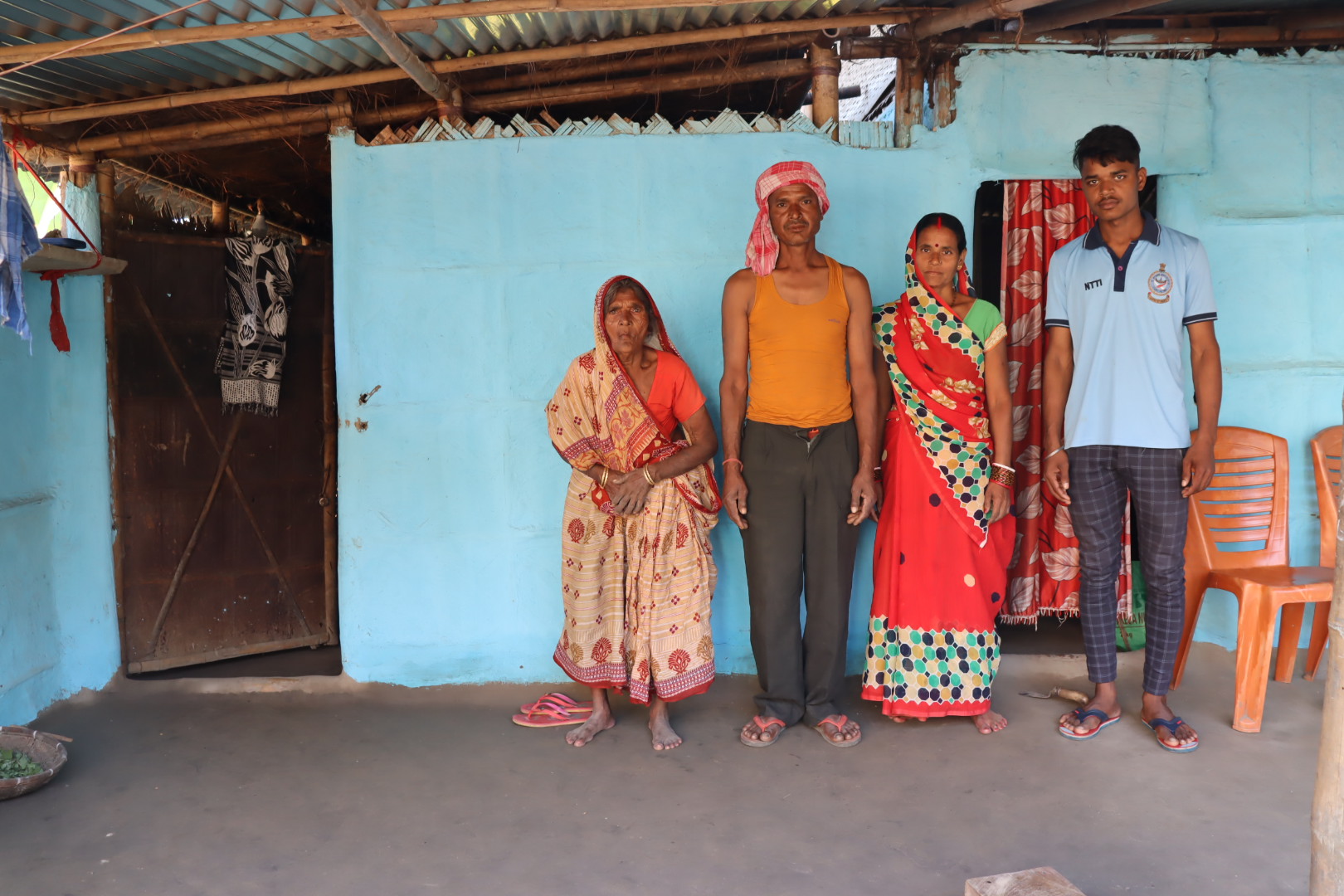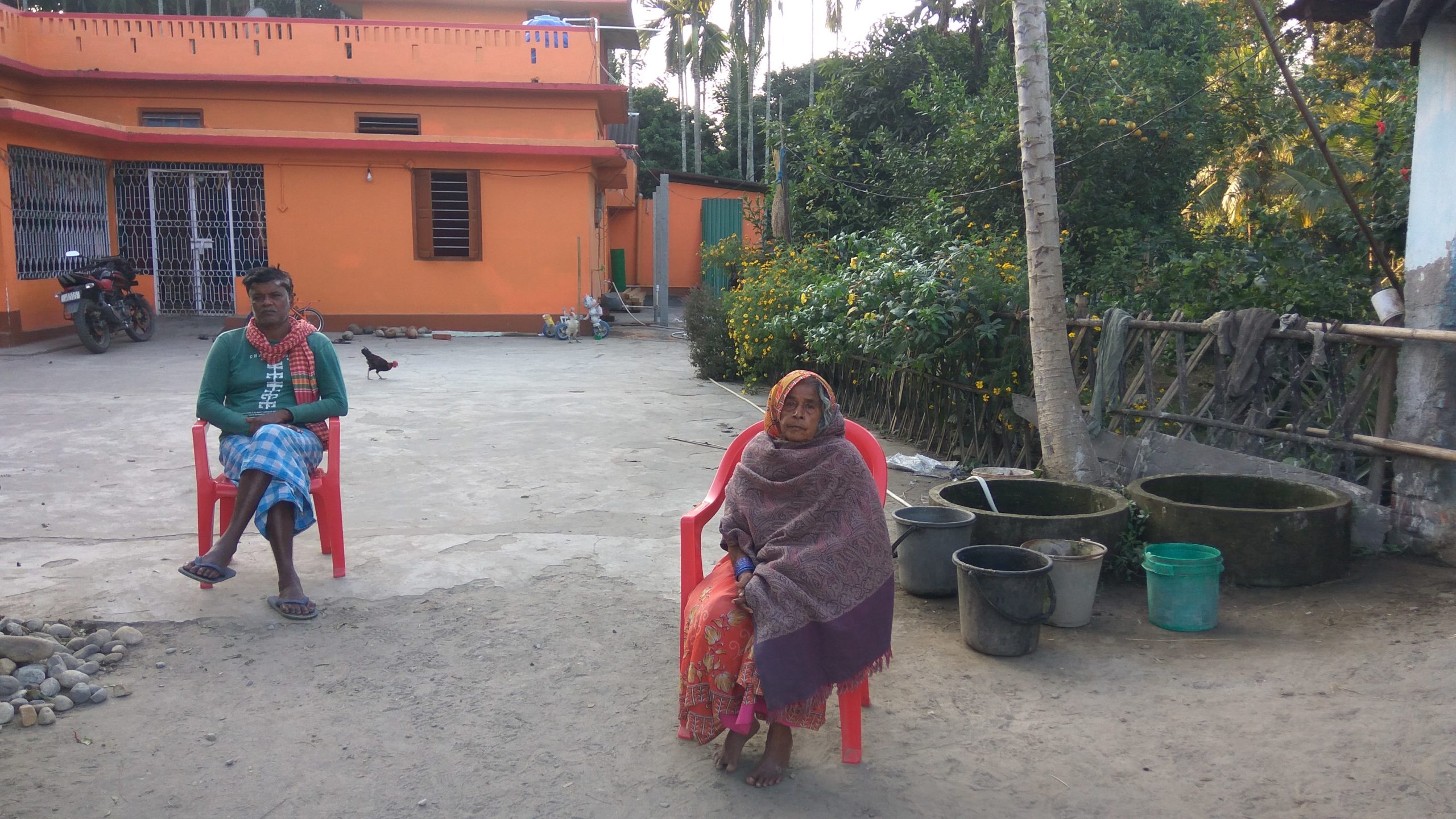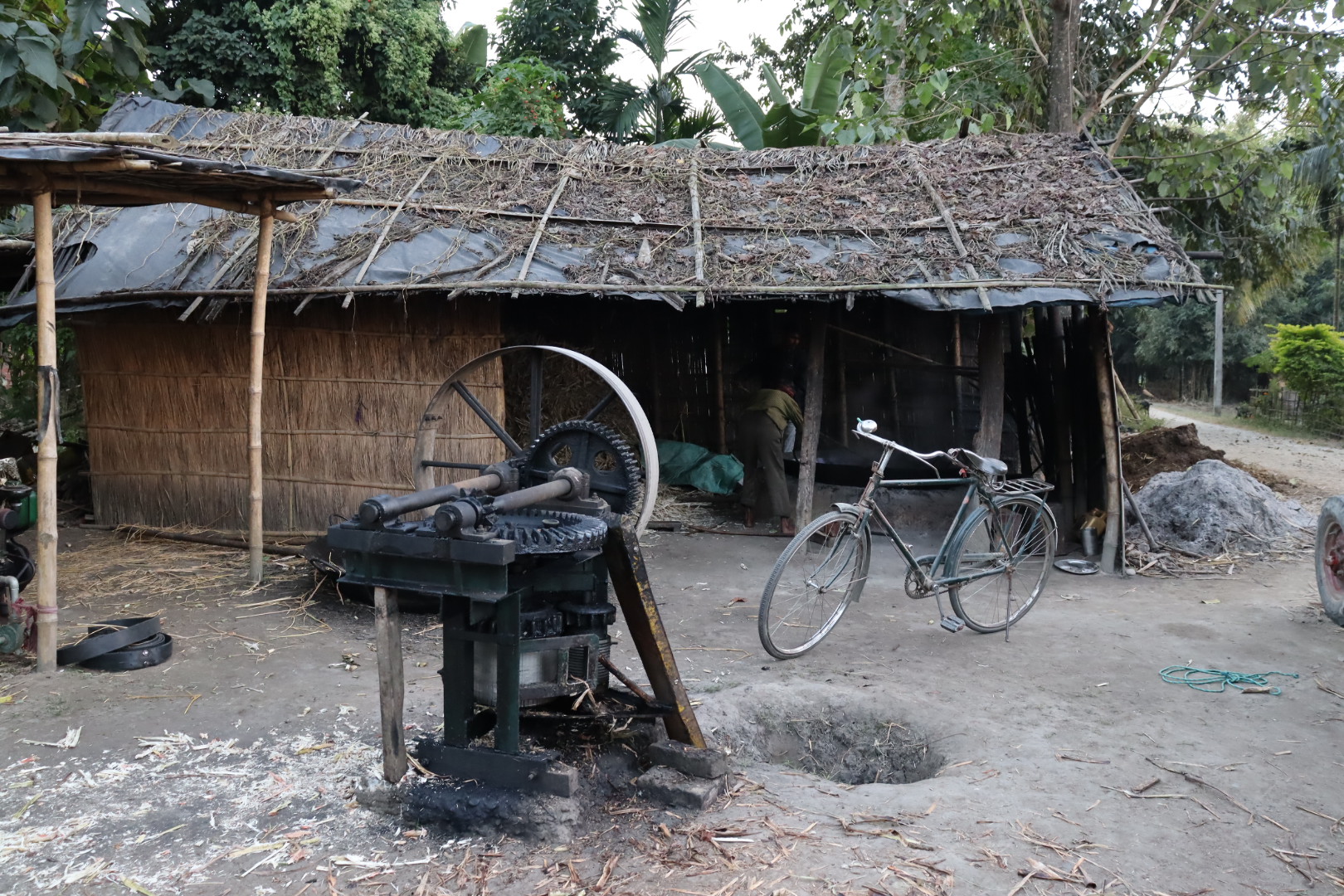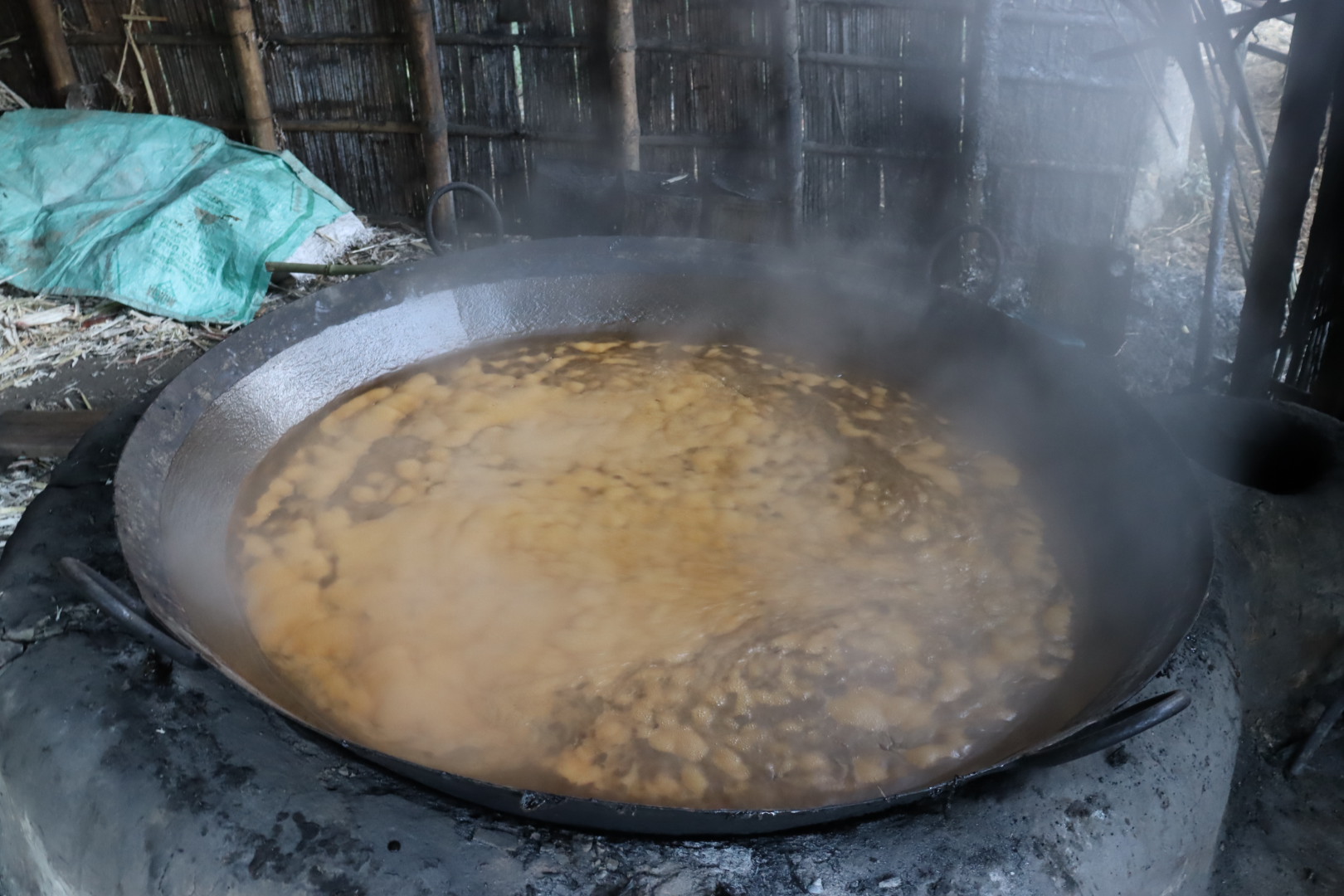Gud Tidings: Migrant families from Bihar add the sweetness of jaggery to Bhogali Bihu in Assam
150 migrant families from Bihar get busy in an aromatic corner of Tezpur, Assam, as they prepare vats of fresh jaggery in time for the harvest festival of Bhogali Bihu, also known as Magh Bihu.


A man making jaggery. Photo: Simanta Barman
Tezpur, Assam
On the 10 kilometre stretch between Tezpur University and Tezpur town via Parowa in Assam, about 170 kilometres from the state capital Dispur, there is an all-encompassing aroma, rich, intense and beloved, of fresh jaggery or gud-in-the-making.
If someone followed their nose, it would lead them to small bamboo sheds where men and women take turns skimming the top of the sugarcane juice, simmering in large cauldrons. There is no escaping the heady smell.
Jaggery is made here by nearly 150 migrant families from Bihar said to have moved here in the pre-Independence days, right up to the early 1950s looking for arable lands to cultivate sugarcane. They are settled permanently in the villages of Bhitor Parowa and Parmai Gauli, about six to eight kms from Tezpur.
These migrant families from Bihar add sweetness to Makar Sankranti and Bhogali Bihu (also known as Magh Bihu), the important festivals of Assam.
The entire jaggery making process revolves around festivities. The first lot of sugarcane is usually harvested after the Durga Puja. And the peak season in January, coincides with Makar Sankranti and Bhogali Bihu in Assam on January 14.
From Bhogali Bihu in January to Rongali or Bohag Bihu in April, the jaggery is in high demand, especially in Assam. Jaggery makers put up makeshift stalls by the road to sell it directly to curious customers.

Kosila Devi who lives in a small blue bamboo-and-mud house is a widow in her late 40s. Her husband Chakhur Rai passed away a dozen years or so ago, leaving her to fend for herself and her five children – three sons and two daughters.
Since then, Kosila and her children have kept the jaggery business afloat as they have to pay the rent in kind with jaggery, for the six bigha (0.8 hectare) of land they have taken on lease in order to cultivate sugarcane.

“When their father passed away, we did not even have a machine to extract the juice out of the sugarcanes to make the gud. I used to use the machines from our neighbouring families,” Kosila told Gaon Connection.
Slowly, she saved enough to buy one. “Now whatever jaggery is produced from the sugarcanes grown in the six bighas of land, the owner takes his share and the rest is ours to sell,” she explained. Her daughters are married off. Her sons process the jaggery and she helps them with that.
Magh Bihu and jaggery
Bhogali Bihu or Magh Bihu is one of the three Bihus celebrated in Assam. It is to celebrate a good harvest. Several delicacies such as pitha, laru etc., are prepared with rice flour, jaggery and sesame seeds, among other ingredients.
Although the delicacies may differ, one delicacy that connects both the Biharis and the Assamese is a dish made with chira (flattened rice), gud (jaggery) and dahi (curd). In Assam, this combination is called jolpan, and is eaten with great relish after Uruka, the night of feasting that initiates the Bhogali Bihu festivities. Jolpan is also enjoyed as a healthy breakfast option.
Harvest festivals like Magh Bihu and Makar Sakranti are a time to remember the farming community and all the others who keep sweet traditions alive, like the jaggery makers of Tezpur who make it possible for people across the land to continue the legacy of cultural practices. Slow jaggery by Slow Products connects Indian cultivators and product creators to markets around the world. Apart from the cost of their produce, 10 per cent of net profits are shared with farmers and creators.
Out of the estimated 150 migrant families from Bihar who now live near Tezpur town, about 90-100 families still continue to make jaggery, while the others have moved on to take up other professions.
Kalawati Devi, a jaggery maker with her roots in Bihar, is in her 70s. “When my husband passed away, my son Rameshwar was just twenty. But in order to live, we managed to tend to the sugarcane and make gud. That is all we had for our livelihood,” she told Gaon Connection. She now lives with her son, daughter-in-law and her grandson. Her daughter-in-law and her son now do the majority of the work of making the jaggery. They cultivate sugarcane in Khonamukh, a village nearby.

Like Kalawati Devi, Dhaneshwari Devi, a widow in her mid-80s, now spends most of her time reminiscing. When her husband, who was in the Indian army, passed away, her son and she continued the jaggery-making business. “We had about 150 bighas of land (24 hectares) for sugarcane cultivation back then. Labourers would come in numbers from Dolabari and other areas and I would supervise them,” Dhaneswari remembered.
She recalled how back in the 80s, daily wage was around three to four rupees and jaggery was sold for around 200 rupees a quintal. Now, the prices are high, and labourers scarce, said her 55-year-old son Mahesh Singh. “Now, even if you are willing to pay the daily wage of three hundred rupees, you do not find labourers or farmers,” he added.

Declining jaggery business
Jaggery-making involves a lot of labour and expenses. The machinery needed is often shared. The sugarcane is harvested, then cut and put through the press that extracts the juice from it which is then poured into pans that are 64 inches in diameter and 11 inches deep. Each pan holds about 20-21 drums of sugarcane juice. It is slowly cooked and thickened with the impurities floating to the top being regularly skimmed off. The sugarcane juice thickens and reduces and once it is of the desired colour and texture it is allowed to cool in the pan itself. Each pan yields about 70 kilogrammes of jaggery, depending on how much juice was poured into it.
The yield of the jaggery depends on how much sugarcane is cultivated on the farmer’s land. One of the jaggery making families owned 22 bighas of land (about 3.5 hectares). They produced 400 containers of gud per year with each container holding 23 kilogrammes of the jaggery.

The scarcity of labour and the labour-intensive jaggery making process has led to a reduction in sugarcane cultivation, said Singh, who has himself shifted to other crops. “Last year, we did not cultivate sugarcane at all. This year, I have cultivated about six bighas, more because I wanted to rather than necessity. Labour is difficult to find and the income is not commensurate,” he explained.
There is also the very real problem of adulteration. Jaggery is treated with chemicals to make it appear lighter in colour and cleaner. “People assume it to be ‘better’ when they compare it to the original darker coloured jaggery,” he rued and shared a tip on how to identify if the jaggery was pure. “Put a piece of the jaggery in a glass of water. If it dissolves without leaving any trace, it is pure,” he said.

The jaggery making starts by the month of October and goes on till April. Usually, the farmer families first cut the sugarcanes and keep the head and root part apart for further use in sprouting and other usage. The discarded sugarcane, after all the juice has been extracted, is used as fuel to cook jaggery, or used as fodder for cattle. Nothing of the sugarcane is wasted.
While people of Assam celebrate Magh Bihu with a dash of sweetness added by these migrant Bihari families, the latter take a dip in a river or pond early in the morning of Makar Sankranti, offer prayers and then have chira, dahi and gud mixture.
So, the next time the wind blows in another waft of the aroma of freshly made jaggery, remember there is probably a jaggery-maker somewhere close by who is stirring the cauldron with all her might so that you may eat the golden brown, sweet gud.

